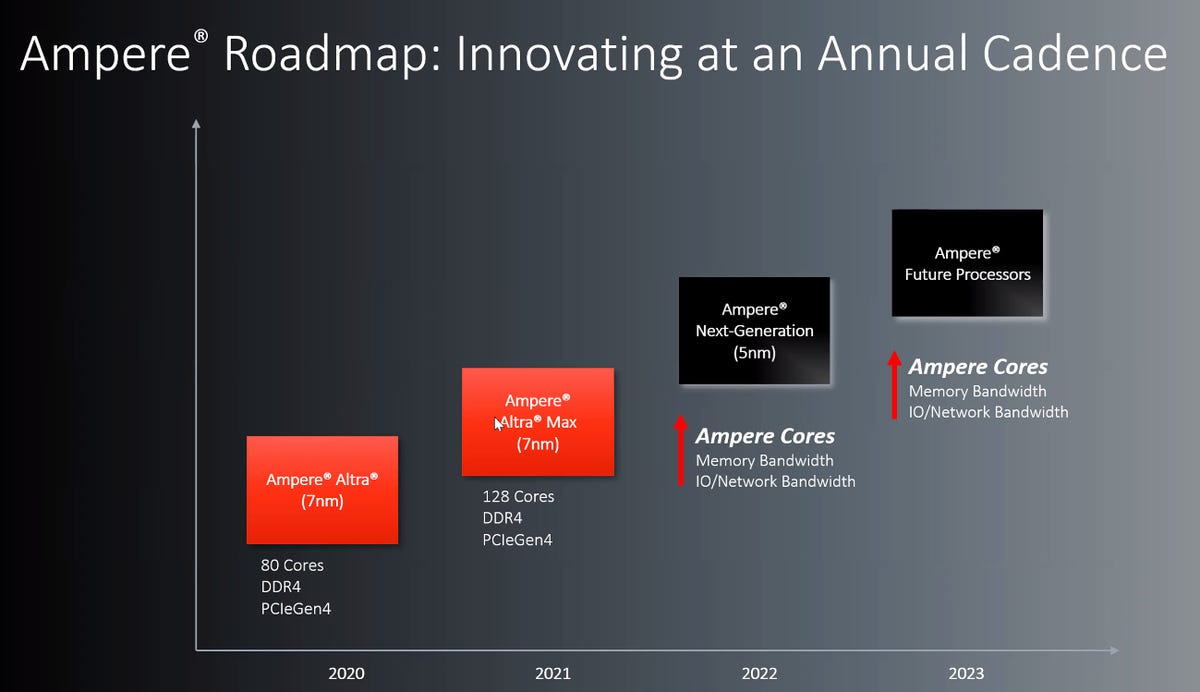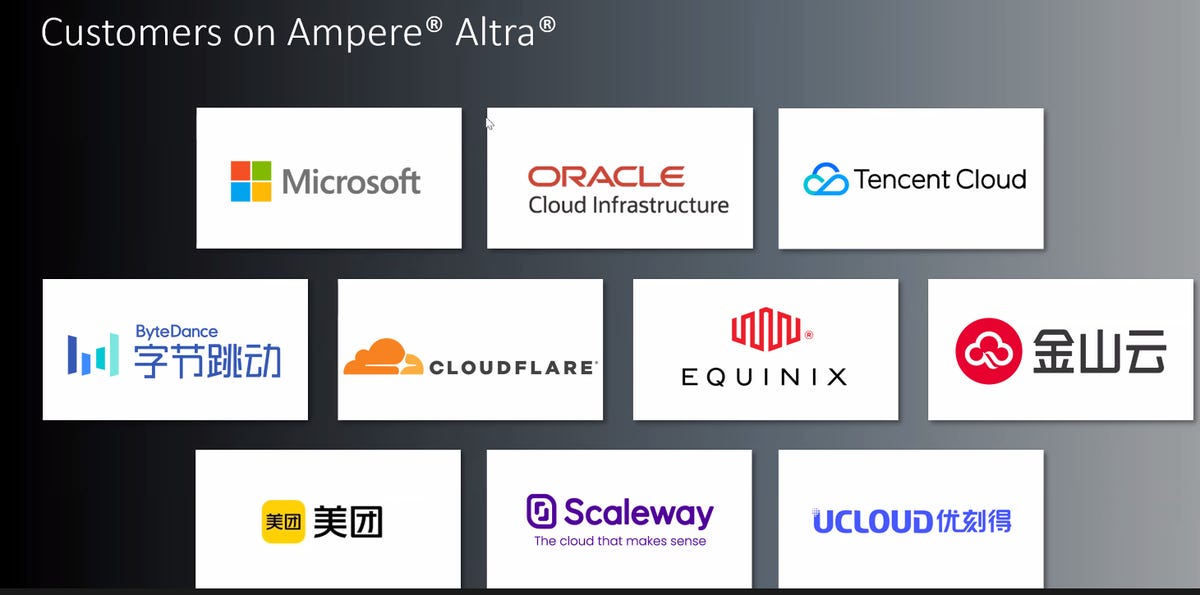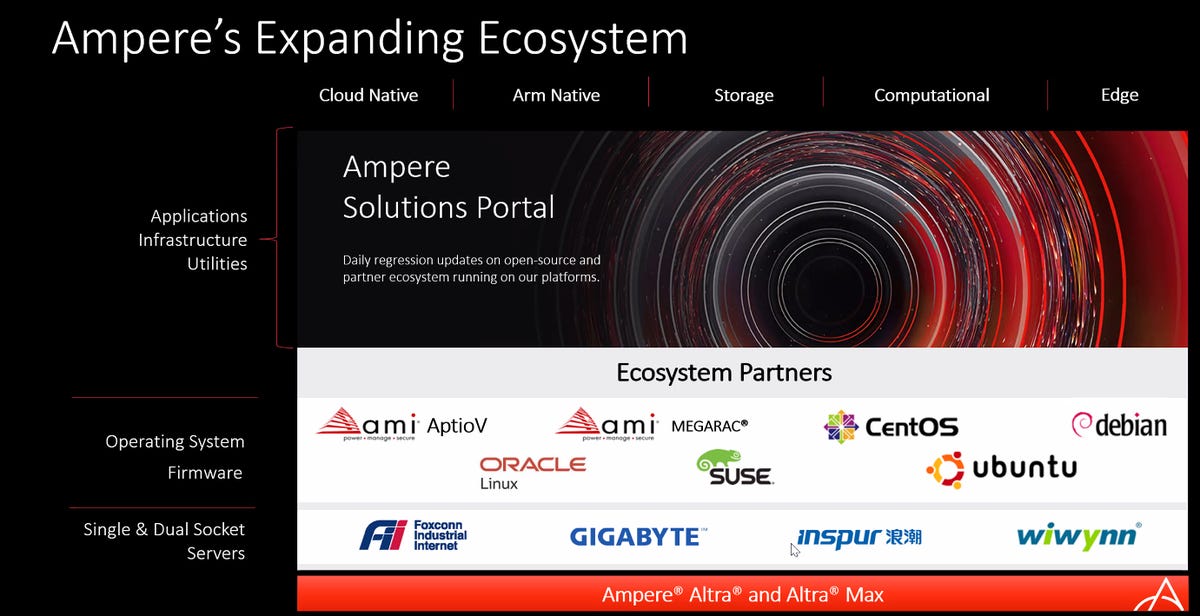Ampere said its Altra Max 128-core server processor is now available, and the company outlined its roadmap for its next-generation chips.
The chipmaker, which makes Arm-based server processors for hyperscale cloud deployments, also said its next-gen products will use cores developed by the company. The 5nm process Ampere chips will debut in 2022 with a follow up in 2023.
Ampere’s Altra and Altra Max used Arm’s M1 core. Altra launched its first Ampere processor last year with plans to take on AMD and Intel. Ampere’s case for cloud deployments goes like this:
- Consistent scaling as the number as cores are added.
- Low power consumption.
- Better performance for workloads such as encryption and media encoding.
Arm processors: Everything you need to know now | Nvidia’s $40 billion Arm bet all about data centers, edge computing, AI
Jeff Wittich, chief product officer of Ampere, said the company can further optimize with its own cores. “We and customers benefit from our own cores. They will be reverse compatible, and we can push performance and scaling,” he said. “With a 5nm process and telemetry data there are more ways to manage power and performance and iterate.”

In addition, Ampere’s roadmap includes an Ampere Solutions Portal that provides a daily regression update on open-source applications running on the Altra’s platform.
Ampere’s processors are gaining more adoption with the white-box server makers that supply hyperscale cloud providers. Foxconn Industrial Internet, Gigabyte and Inspur are server makers using Ampere processors to power servers. In addition, Microsoft Azure, Oracle Cloud, Tencent Cloud and Equinix are customers using Ampere Altra along with players such as ByteDance and Cloudflare. “We have 5 of the top 8 cloud providers in the world,” said Wittich.

The company’s launch, roadmap and hyperscale traction are part of a larger growth plan, explained Wittich. Once Ampere proves the case for hyperscale cloud deployments, it can expand partnerships with server makers targeting the enterprise. “We would be looking at on-prem private cloud and not legacy IT,” said Wittich. “You’ll start to see some of that popping up.”






































